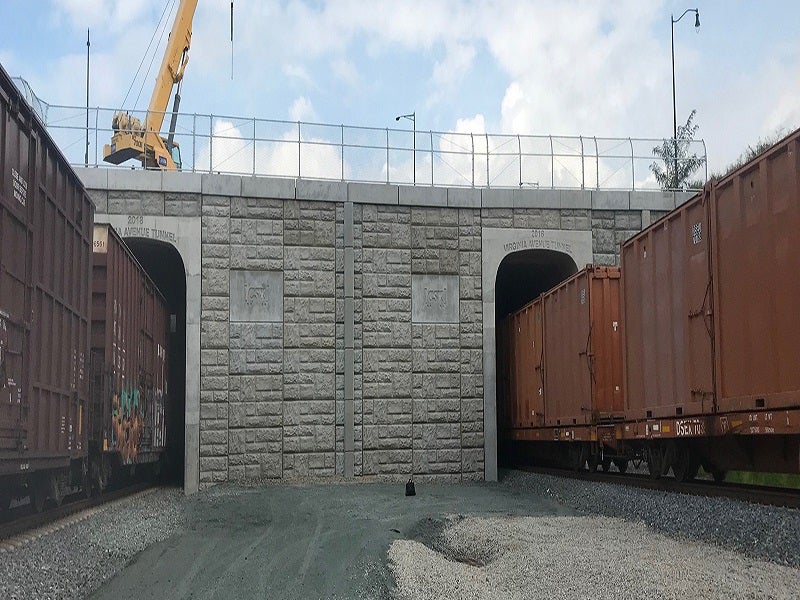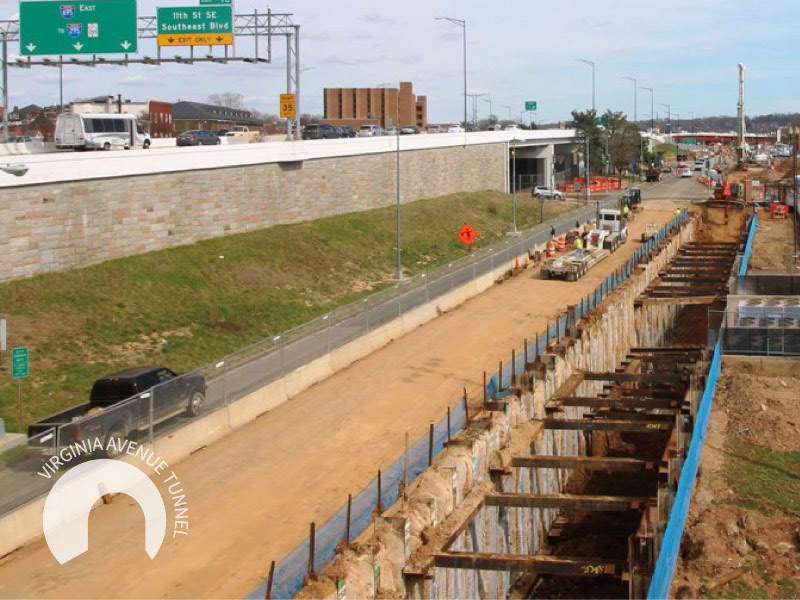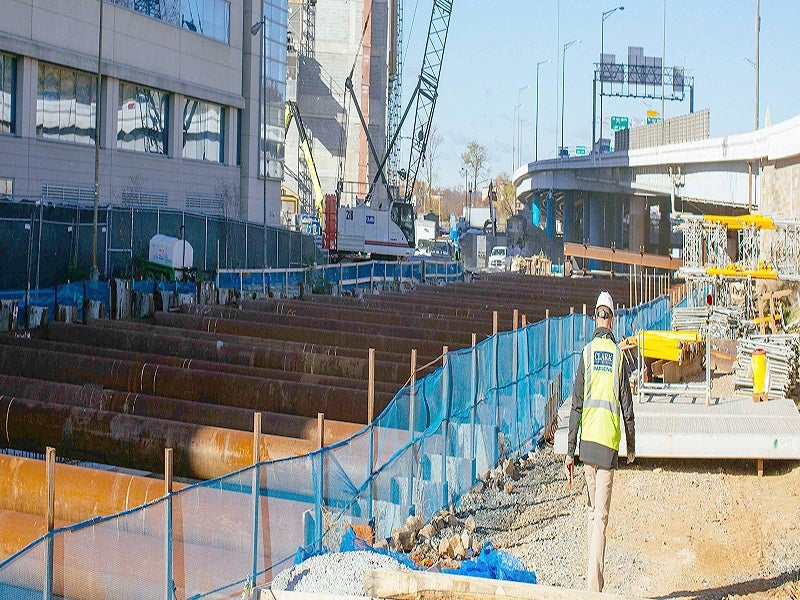The Virginia Avenue Tunnel reconstruction project involved the replacement of the century-old tunnel in south-east Washington, US, in order to increase its capacity. The reconstruction project replaced the old single-track tunnel with a two-track tunnel.
The tunnel, owned by CSX Transportation, is a key element of the East Coast rail transportation network, in the US, and serves as an important route for freight trains. It is located beneath Virginia Avenue SE, with 2nd Street SE on the west side, to 11th Street SE on the east side.
The reconstruction was carried out in two phases, with an estimated investment of $250m. The first phase began in May 2015, and was completed in December 2016 while the second phase was completed in December 2018.
Funding for the project was provided jointly by CSX, and the state of Virginia.
The project was implemented by CSX, in co-operation with local and federal authorities including the District of Columbia Department of Transportation (DDoT) and the US Department of Transportation Federal Highway Administration (FHWA).
Virginia Avenue tunnel history
The structures of the 1.158km-long tunnel were constructed in 1872. The project was necessitated by frequent interruptions and operational deficiencies, due to the ageing infrastructure.
The single track of the tunnel was causing delays in the flow of freight train traffic, and congestion for commuter trains. CSX released a draft environmental impact statement (DEIS) for the construction of two tunnels by replacing the existing structure, in order to address the concerns.
The tunnel reconstruction project was part of the $850m National Gateway Initiative, a public-private partnership announced in 2008 to support the creation of efficient corridors for rail freight between Mid Atlantic sea ports, and the Midwest.
Virginia Avenue Tunnel reconstruction details
The reconstruction of the Virginia Avenue Tunnel increased the tunnel width to accommodate a second track, and raised the height of the tunnel roof to allow the passage of double-stack intermodal freight trains, carrying two freight containers stacked on each car.
Phase one of the project included the relocation of major utilities and the demolition of a portion of the existing tunnel’s south wall and roof, to accommodate the new south tunnel alignment. A secant pile wall system beside the remaining section of the south wall was constructed to support the excavation system.
A dividing wall was also built between the new tracks for the majority of the reconstructed tunnel. A new 4,100ft, cut-and-cover, cast-in-place concrete structure was built to the south of the existing brick and stone masonry tunnel.
The second phase of work involved the demolition of the remaining parts of the current tunnel’s roof and south wall, as well as the construction of the new north tunnel, and restoration of ten blocks of Virginia Avenue with advanced amenities.
Virginia Avenue Tunnel reconstruction benefits
The reconstruction of the ageing tunnel was undertaken to ease rail and highway truck traffic on the CSX I-95 corridor, and offset approximately 5.5 million tonnes of CO₂ emissions. It will also reduce maintenance costs while direct and indirect jobs created by the project are estimated to contribute $250m in revenue to the local economy.
The project provides better access to Garfield Park for wheelchair-dependent individuals. A bike path between 2nd and 9th Streets, and a dedicated dog park at Virginia Avenue Park were also built.
The traffic lane configuration and traffic signals between 5th/6th and 8th Streets were improved to provide safer traffic conditions.
Contractors involved
The design-build contract for the project was awarded to a team of contractors including Clark Civil and Parsons Transportation in September 2015. The project team also included Clark Foundations, Clark Concrete, C3M Power Systems, and Metro Earthworks.
C3M installed the conduit infrastructure for the electrical, signalling, communications, and security systems.






